Carbureted or Turbocharged: Which Corvair is right for you?
If you’re a car enthusiast or merely of a certain age, you’ve heard of the Chevrolet Corvair. The car’s safety at any speed is a well-trodden conversation, as are the design differences between the model’s two generations. Among Corvair collectors, though, conversations about the car’s merits are more nuanced, and rightfully so: The Corvair could be had in a swath of flavors throughout its life.
Perhaps chief among the influencing factors of your Corvair experience is what engine you pick. As with the rest of the car, there were several options. Which air-cooled six-cylinder engine is best? Coming from a Corvair owner, the answer is simple: It depends.
Chevrolet gave buyers a surprising amount of variation for the rear-engined Corvair, but those in the know seek out two configurations more than any others: The turbocharged engines, making 150 or 180 horsepower; or the naturally aspirated versions, cranking out 140.
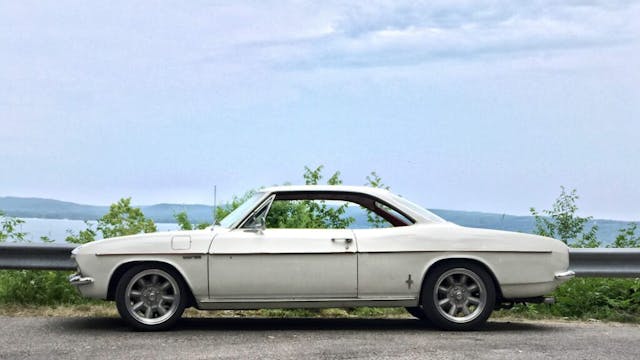
The 150-hp turbo was introduced in the 1962 model year as the new “Spyder” option. It was the first time Chevrolet put a turbocharger on a production car, and it was an admittedly rudimentary system by today’s standards. The Carter YH carburetor was placed before the turbocharger as a draw-through arrangement. This limited boost only to what air could be pulled through the relatively small Carter carb and then compressed into the long intake runner that spanned the aluminum cylinder heads on opposite sides of the flat-six engine.
As such, a turbo car is known for not being able to take advantage of its boost until third or fourth gear, even when it’s perfectly tuned and set up. This can make these Corvairs a little lackluster in stop-and-go traffic, but they come on strong once rolling and spooled up.
On the other side of the coin is the 140-hp engine that came out in 1965. The turbo cars may have been literally breathing through a straw, but the 140-hp engine had to drink from a fire hose. A quartet of Rochester carbs—HV-model primaries and H-model secondaries—are operated with a progressive linkage that gives a second kick in the pants as the driver presses the throttle to the floor, opening up all four throttle blades.
Each Rochester is capable of roughly 100cfm airflow, which is a whole lot of carburetor—400cfm total—on a relatively small 164-cubic inch engine. It’s a tried-and-true system, though, and the theory that an engine will only pull what it needs comes from situations like this. Just like the turbocharged engines, the 140-hp models have their weak points. The 140-hp engines had the largest valves of any Corvair engine and thus the valve seats pressed into the head have a tendency to drop out and cause chaos in the combustion chamber.
Both have similar power and some compromise on performance and reliability. So why choose one over the other?
Having spent over 16 years in the Corvair community myself, and owning the white, naturally aspirated ’65 Corsa you see here for six of them, I think the answer comes down to two factors: drivability and history.
Buyers of “driver” cars often shop for the 140-hp cars due to their motor’s flatter torque curve and easier tuning compared to the mills of the turbo cars. This leaves the boosted engines for those who want to own a milestone of unique tech that was cutting-edge for its time. Even if they are choosing the comparatively boring engine, like I did, the Corvair is still a great driving car with character and history to spare.
Fortunately, cost is not a significant factor for those weighing their Corvair engine choices. In order to be as apples-to-apples as possible, we took a look at values for 1966 Corvairs in the same Corsa trim, with the engines being the only major difference. An Excellent, #2-condition, 180-hp turbo car only carries a $1200 premium over its same-condition, carbed sibling, while the delta shrinks to only $500 between #3 (Good) condition, driver-quality cars.
Corvairs have long been the affordable little brother to the heavy-hitter big-body cars of the 1960s, though that doesn’t seem to have endeared them to younger generations looking for an entry point into American cars from the ‘60s. The lion’s share of quotes sought from Hagerty for Corvairs comes from boomers, and that percentage outstrips their overall position in the market. Gen-X’s interest is about evenly spread across both generations of the car, but interestingly, millennial and Gen-Z generations have shown more love for the first-gen Corvair.
Those who count themselves among the Corvair faithful are drawn to its history and misunderstood nature. Their die-hard enthusiasm and taste for intricate and unique details is a big part of what’s kept the community for this outcast Chevrolet thriving. The choice between turbocharging or carburetion merely adds another layer to how the Corvair is appreciated.
***
Check out the Hagerty Media homepage so you don’t miss a single story, or better yet, bookmark it. To get our best stories delivered right to your inbox, subscribe to our newsletters.
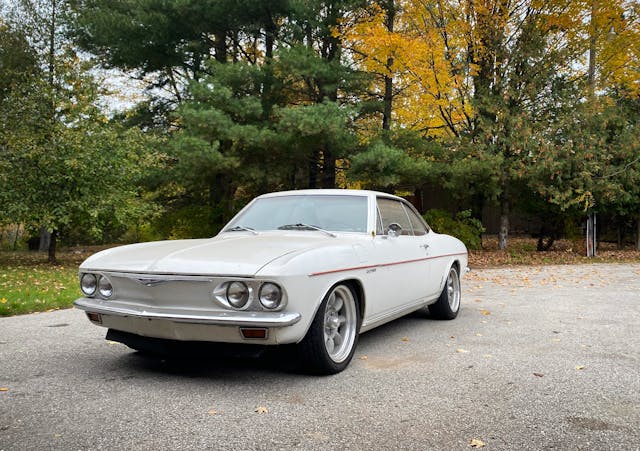
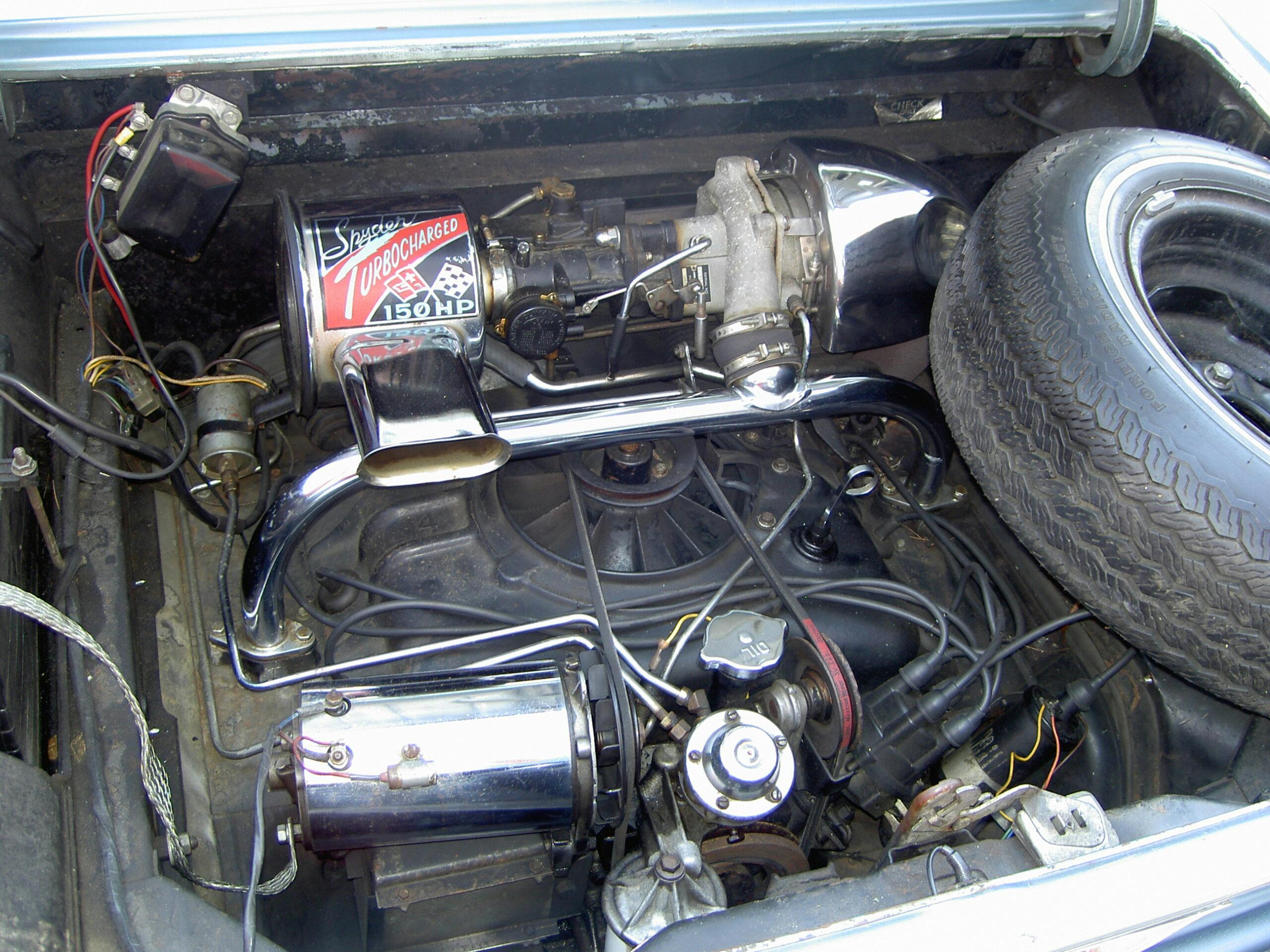
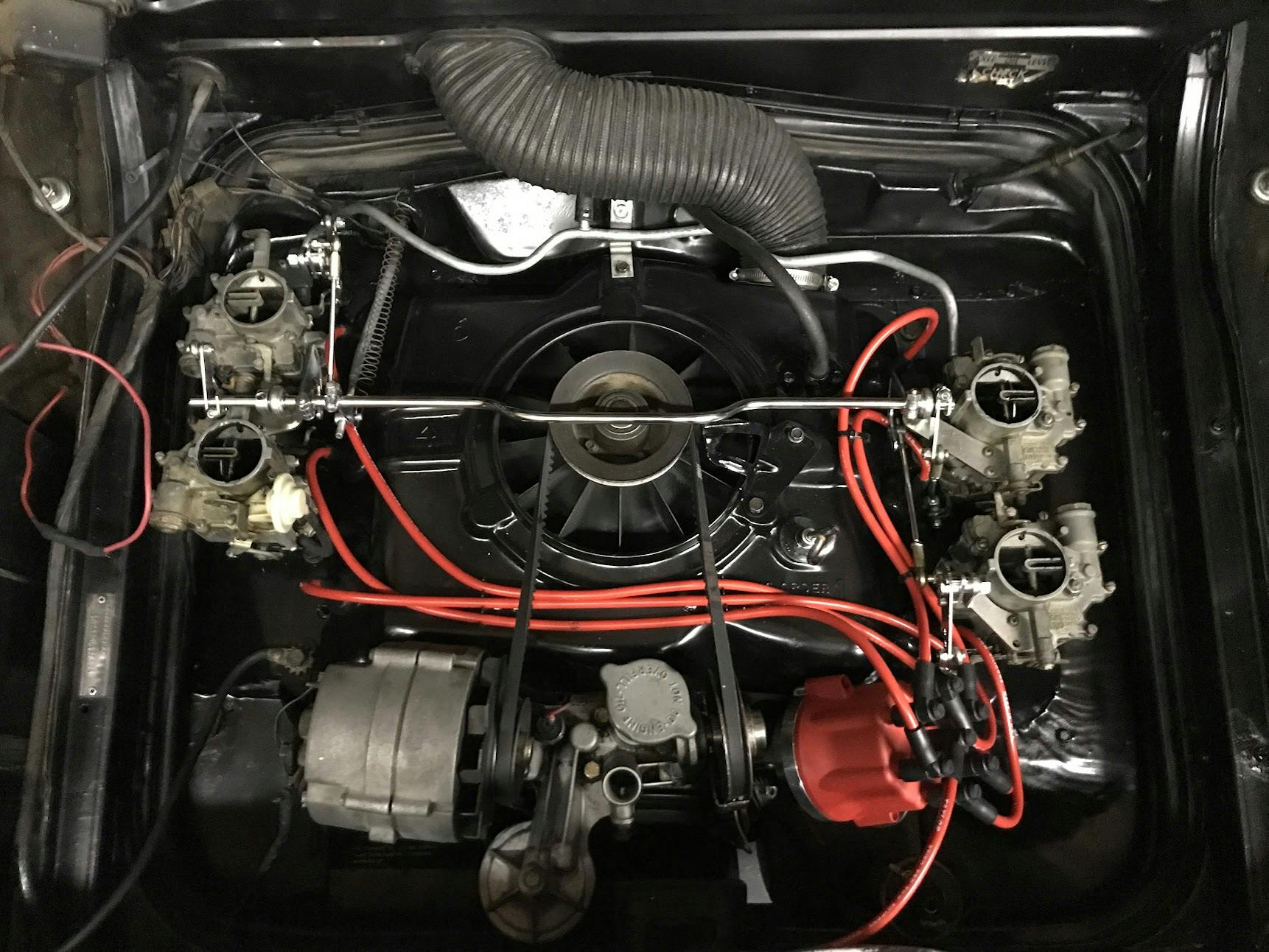

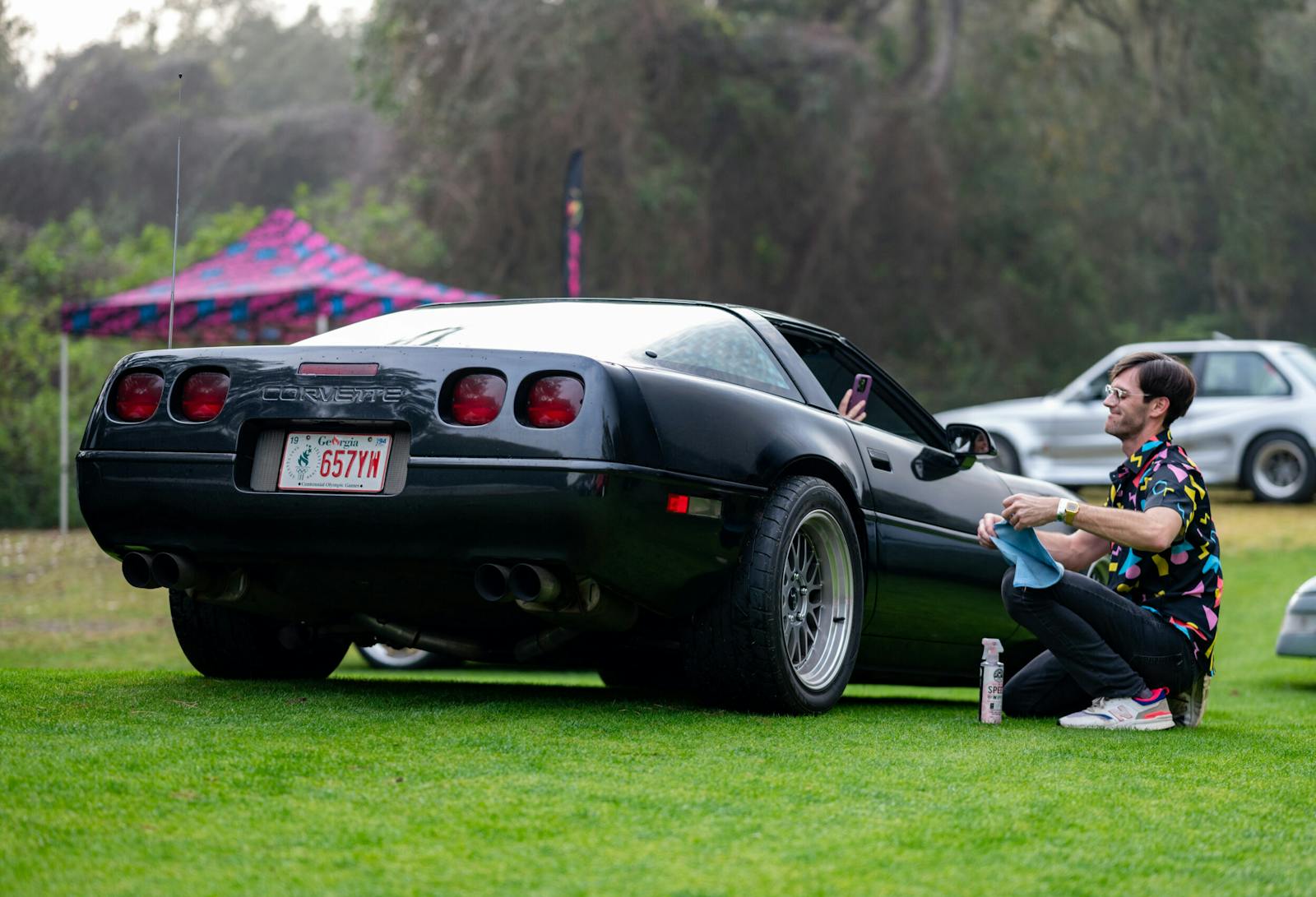
Tax time is past, the weather is starting to warm up where I live and I am looking forward to bringing the 1968 Monza convertible out of hibernation. The Matador Red paint looks great with the black interior and black top and it is so much fun to roll down a quiet country back road in the spring time with the top down. It is a dual carbureted, 110hp, power glide car. Most everything is all original right down to a distributor with points and a fully functional AIR pump! They only made 1386 Monza convertibles in 1968 and this one is #1341. It’s a fun car to drive although no where near the performance level of so many modern performance cars that are being offered today. Once you put the top down and hit the road your cares just melt away!
That sound like a great cruiser! Enjoy this driving season, I know I will be now that it’s finally arrived in Michigan.
I think I would want the non turbo motor for the reasons you have mentioned. I like the Corvair, when I see one at a car show I always talk to the owner.
My very first car in 1971 had what must be one of the most distinctive sounds of any engine, before or since: a 1965 Corvair 2-door coupe 140 4-carb 4-speed with four EMPI free-flow separate air cleaners and dual free-flow Stebro exhausts, each with twin tips out the rear complementing the twin circular tail lights on each side. I rebuilt the engine in a friend’s garage and it was very strong. Nothing is quite like an air-cooled pancake six with throaty dual free-flow exhausts. The distinctive pancake engine burble was one thing at idle (an even “blub blub blub blub” due to the engine’s inherently-balanced firing sequence) but when the secondary carbs kicked in on acceleration (seriously lifting the front end with all four carbs wide open in the process), it was sheer music. I still have dreams about that wonderful machine. GM never had the guts to produce such a unique mass-market automobile again. It was a particular hoot to throw it into cornering power drifts, reverse steering under perfect control with the throttle. It was the best-handling American car of the mid-sixties with true four-wheel independent suspension and with big Chevelle drum brakes standard, it likely was the best-braking car with drums of the time. I never had radial tires but that likely would have made a big difference. It’s a shame it didn’t have quick-ratio rack and pinion steering or disc brakes – they would have made it a very competitive sports car with anything from Europe. Footnote: after I sold it to help finance a return to university, I was in bed late one hot night with the window wide open and off in the distance I heard what could only be my Stebro-equipped Corvair in the distance revving through the gears. I was glad the new owner was having a blast but my main emotion was regret…
A follow up to my earlier post with some memories of my 65 Monza 140 and keeping it in tune. Yes, as one poster noted, you learned to work on and maintain them quickly to save money. I didn’t find setting up and synchronizing the four 140 carbs a problem. Once rebuilding the carbs and setting them up according to the GM shop manual (having that book was essential!) and adjusting the linkage carefully, they performed great. From cold, they started with a push of the pedal to the floor to set the choke, release, then holding the pedal down about 1/4 while turning the key. It started immediately on fast idle, then settled down after a minute and a quick blip of the pedal. All mechanical and very reliable. The “worm and ball” steering box, ubiquitous in American cars then, was prone to play with age but was easily addressed on the Corvair by removing a plug on the front trunk floor, accessing the screw and lock screw on the top the box and carefully adjusting to reduce play, again as per the shop manual. In hindsight, you have to give credit to those that wrote the very well laid-out GM shop manuals to keep the Corvair and other classic gems on the road. I literally disassembled and rebuilt the engine by that manual with a few basic tools, apart from machine shop head rebuilds. I was 21 and too naive to think that was a massive job to take on without having done anything like it before but it turned out great. I enjoyed many happy hours enjoying that unique machine.
I bought a 65 Corsa 4spd 180-hp Turbo and the power comes on strong as long as the revs are over 3000. (its always on). The car pulls and is quicker than the 4-carb dual exhaust 140-hp version in 0-60 (180 9.5sec. 140 10.5 sec). The turbo is currently worth $3k more Hagerty Valuations (they recently separated the Corsa versions). Only 3% of all 65 Corvairs were quipped with the 180 engine. The 65-66 turbo convertible (less than 3,000 built) is the most collectible and valuable model other than the Yenko Stinger.
1965 Corsa 2dr. Convertible 6-cyl. 164cid/180hp Turbo
cond. 1 $58,300 +57.6% cond. 2 $35,700 +58.% cond. 3 $22,500 +58.5% cond. 4 $11,400 +46.2%
1966 Corsa 2dr. Convertible 6-cyl. 164cid/180hp Turbo
cond. 1 $50,200 +41.4% cond. 2 $31,000+42.2% cond. 3 $19,500 +41.3% cond. 4 $10,100 +32.9%
1965 Corsa 2dr. Convertible 6-cyl. 164cid/140hp 4x1bbl
cond. 1 $55,500 +57.7% cond. 2 $33,800 +57.2% cond. 3 $21,300+57.8% cond. 4 $10,700 +44.6%
1966 Corsa 2dr. Convertible 6-cyl. 164cid/140hp 4x1bbl
cond. 1 $47,700 +41.5% cond. 2 $29,400 +42.0% cond. 3 $18,600 +42.0% cond. 4 $9,500 +32.9%
The 62-64 Monza Spyder 150-hp turbo and 65-66 Corsa 180-hp turbo are historically significant classic cars (as was the 62-63 Olds F-85 180-hp V8) as they were the first passenger cars to have a turbocharger. They weren’t offered again for decades.
The Olds was 215 HP
Just Buy one, any model and enjoy it….also the Corsa folks any age…
I’ve been a Corvair fan for some time. Ordered a new 1960 Monza after seeing one at the Indy track in May ’60. I took delivery in early July. Ordered it with the performance engine and 4 speed. got the engine but
to my knowledge no 4 speeds were sold to the public. 30 plus Corvairs later I am down to a ’65 Corsa convertible 140/4spd purchased in 1968 when it was traded in for a new Impala. It has not been driven for some time and I am slowly in the process of putting it back on the street. Time is my enemy as I am just hours away from driving it but more important things get in the way. I have also accumulated some parts and they all need a new home. Anyone need a level floor kit for a Rampside?
In my younger days , I had a “68” . I took it up to the UP/Michigan from Chicago . Cruising at around 70 close to 80; maybe ! Drove around the U P , down a trail, put a hole in the gas tank. My friend put a piece of gum on the hole, and drove back to Chicago. Never fixed it, sold the car ! Go figure .
Nice article Kyle! I want your 140 Corvair 😎